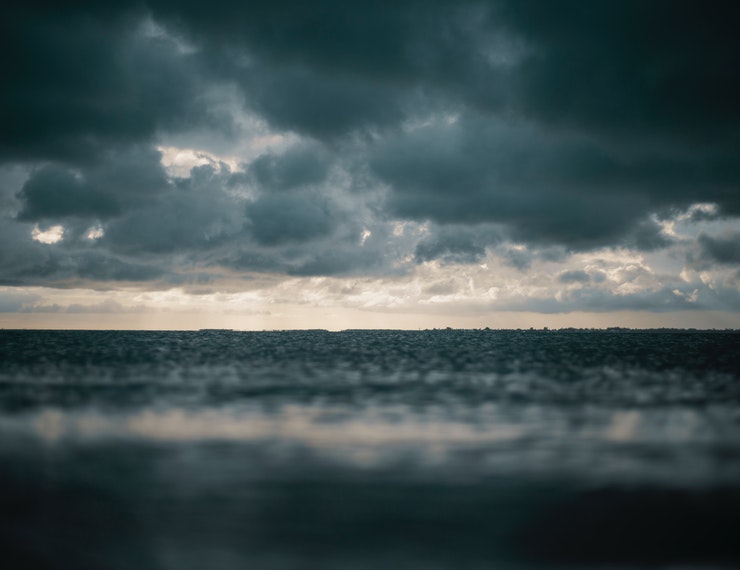
Hurricane Lorena threatens Mexico’s resort-studded Baja
CABO SAN LUCAS, Mexico (AP) — Residents and tourists hunkered down in homes, shelters and hotels as Hurricane Lorena menaced Mexico’s resort-studded Baja California Peninsula on Friday, threatening damaging winds, flash floods and life-imperiling surf.
The U.S. National Hurricane Center reported that the storm’s eye was near the southern end of the Baja California Peninsula in the evening, and said Lorena’s future track was “highly uncertain.”
Earlier police and soldiers went through low-lying, low-income neighborhoods, urging people to evacuate. Locals who have been through past hurricanes took no chances, pulling boats from the water and boarding up windows and doors.
“If we don’t get the yacht out, the waves can damage it,” said Juan Hernández, who rents his craft to foreign visitors. It’s “a preventative measure for when a cyclone threatens.”
Authorities in Los Cabos said 787 people had taken refuge at 18 storm shelters.
The hurricane center said Lorena’s maximum sustained winds had increased to 85 mph (140 kph), and its center was about 60 miles (95 kilometers) north-northeast of Cabo San Lucas. After stalling, it was moving again toward the northwest at 5 mph (8 kph).
It kicked up strong waves earlier in the day at the twin resorts of San Jose del Cabo and Cabo San Lucas. The clouds cleared somewhat in the evening in Los Cabos, and at least a handful of people ventured onto the beach to view the ocean.
Youtube video thumbnail
The two cities remained under a hurricane warning, though the hurricane center’s latest projection now put them outside the cone of uncertainty for the storm’s path.
Civil defense official Carlos Godínez said Friday that an American tourist who went to the beach in Los Cabos with his son died after being swept out to sea. The son survived. But Godínez said the death occurred early Thursday, before beach access was restricted, and that it was “not necessarily attributable” to Lorena.
A second tropical storm, Mario, was about 345 miles (555 kilometers) south of the southern tip of the Baja peninsula and had sustained winds of 65 mph (100 kilometers). But it wasn’t expected to hit land.
The port of Cabo San Lucas was closed to navigation. Authorities suspended classes for Friday and prepared to use schools as shelters if necessary.
“We are taking preventive measures,” said Baja California Sur state government secretary-general Álvaro de la Peña. “Rations, gasoline, all supplies are guaranteed. There is no need for panic buying.”
The region was in a state of yellow alert and anticipating heavy rains.
“Lorena is going to dump a lot of water,” Godínez said.
Lorena came onshore a day earlier as a hurricane in the western Mexican state of Colima, whipping palm trees with its strong winds and lashing the area with rain. It flooded streets, washed out roads and touched off minor slides in 10 municipalities. Dozens of trees were downed, and power was knocked out in some areas.
Colima state Gov. José Ignacio Peralta said more than 7,400 acres (3,000 hectares) of crops such as bananas and papayas were damaged statewide, but there were no deaths or significant damage to infrastructure.
Lorena’s brush with land caused it to lose strength and become a tropical storm, but it regained its punch as it headed toward Los Cabos.
In the Atlantic, Hurricane Jerry weakened but was forecast to dump heavy rains on the northern Leeward Islands as it past to the north.
Its maximum sustained winds stood at 80 mph (130 kph) on Friday afternoon. It was centered about 125 miles (200 kilometers) north-northeast of Anguilla and was moving to the west-northwest at 17 mph (28 kph).
Elsewhere in the Atlantic, Hurricane Humberto became a post-tropical cyclone at sea after tearing off rooftops, toppling trees and knocking out power in Bermuda while blowing past the British territory Wednesday night. Officials said the storm caused no reported deaths.
In Texas and Louisiana, heavy rains from the remnants of Tropical Storm Imelda flooded low-lying areas and caused at least four deaths.
The National Weather Service said preliminary estimates suggested that Jefferson County in Texas got more than 40 inches (3.3 feet) of rain in a span of just 72 hours. That would make it the seventh wettest tropical cyclone in U.S. history.


 How to resolve AdBlock issue?
How to resolve AdBlock issue?